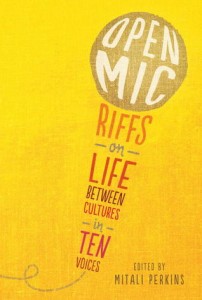 Why I Picked It Up:
Why I Picked It Up:
In searching for strong social studies text for our Beyond the Textbook Session, I found this advanced reader’s copy in Sherry’s personal collection. It was definitely a “Jessica book,” so she happily gave me her copy.
Why I Finished It:
Curiosity! From the beginning I was intrigued by the stories the authors told . This book is told by ten popular young adult authors. In different genres, each author tells their tale of how their unique culture and/or race impacted their life. This short memoir style novel is a quick read that had me hooked, because one moment I was laughing out loud, another moment I sat uneasy, and yet another I was upset at the world we have created. As is often true in discussion of differences in culture and race, there are a variety of real, raw emotions presented by these authors.
Who I Would Give It To:
This book is definitely for secondary students and up as some authors discuss sensitive subjects that might be too much for some students. This text is a definite must for social studies classes discussing culture.
Integration Ideas:
Theme, Making Connections Between Voices, Mood, and Tone
The theme, cultural differences, is obvious from the title and teaser on the back cover, but I think this is great! The authors are all dealing with different cultures and have had different experiences and so it leaves the door open for so much discussion!
Start conversations about cultural differences with open-ended, non-text-dependent questions that will provoke deep conversation. Have students answer the questions in small groups and then answer the same question in connection to the text.
- What are the benefits and challenges of a diverse society?
- How does our culture, beliefs and values, affect our relationships?
- How does your race affect your identity?
- How can you succumb or rise above stereotypes of others?
Next, have students talk about the different stories told. Not only do the authors have different experiences that could be discussed, the authors use different genres to express their experience. The differences in genres and experiences from story to story naturally result in varied tones and moods. In a notebook have students chart the different experiences of the authors in order to discuss similarities and differences in experience and delivery. Don’t stop there! Have students discuss which author made the biggest impact on them and why.

Writing – Voice
Have students discuss the different authors’ mood and tone and the impact on the message delivered. Have students discuss why the authors chose to deliver the message in the way they did. How did the authors create tone? Then provide time for students to reflect on their own writing. In partners, have students read a peer’s paper. The peer should express the mood of the paper they read and back up their opinion with text evidence. The student author then must decide if that was the intended mood and if it expresses their point in the best possible way. Allow time for revision.






Leave a Reply